
Today’s guest post is by Charles Philipp, co-founder of MICRO, a nonprofit that creates free standing “mini museums” for public places. MICRO caught my attention for several reasons. Their installations are a great example of pop-up culture (one of the first trends CFM studied when we launched in 2008). And MICRO is an interesting example of an organization that is not, itself, a museum (neither of the founders come from a museum background) creating museum-y experiences.
The idea for MICRO began in a hospital waiting room. My partner Amanda Schochet and I were stuck there for hours, flipping through old magazines, bored and worried and trapped. And slowly, the idea for a tiny museum that could transport us outside the hospital walls began.
Once we got out of that waiting room, we started building the first Smallest Mollusk Museums, initially as art pieces in shoe-boxes, then more seriously. Amanda’s background is in computational ecology – mine is in media production. The more we talked and built, the more important it felt to be creating science museums that everyone could understand and engage with. We all want to understand the world we live in.
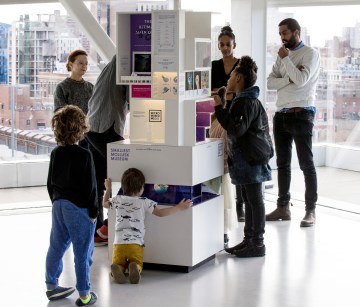
The idea quickly began to attract people who were excited to see what MICRO could become. To build the ‘real’ Smallest Mollusk Museums a team of designers, engineers and storytellers collaborated with over thirty scientists from leading research institutions across the world including Stanford, the Hebrew University of Jerusalem, MIT, and the University of Oxford.
Skip over related stories to continue reading articleMICRO’s model flips the challenges faced by a lot of traditional museums, many of which are asking: “How do we invite people in? How do we reach audiences who might not feel welcome, or might not consider visiting because of time, money, or distance?”
At MICRO, we’ve sidestepped those questions by building a fleet of six-foot-tall museums that get installed in public spaces like transit hubs, community centers, malls, and even hospitals. We’re putting museums in the places people already are, in the places they’re already visiting.
Our model addresses accessibility and equity. Traditional bricks and mortar museums are often geographically clustered in wealthier neighborhoods. Entry is often expensive. In New York City, Manhattan has 85 museums. The Bronx? Fewer than 10, despite the fact that the boroughs have roughly the same sized populations. But MICRO’s museums aren’t bound to bricks-and-mortar real estate, and they’re never behind a paywall. Our museums can go into any indoor space with a power plug.
Since our public launch in November 2017, we’ve installed museums with venue partners including the Brooklyn Public Library System, the New York Health + Hospitals System, Rockefeller Center, Ace Hotel, and Ronald McDonald House NYC, an organization providing lodging and care for hundreds of families who have traveled to the city because their children are battling cancer in NYC’s hospitals. That venue partner is very special to us at MICRO, since the families there are surrounded by some of the most wonderful museums in the world… but often cannot access them.
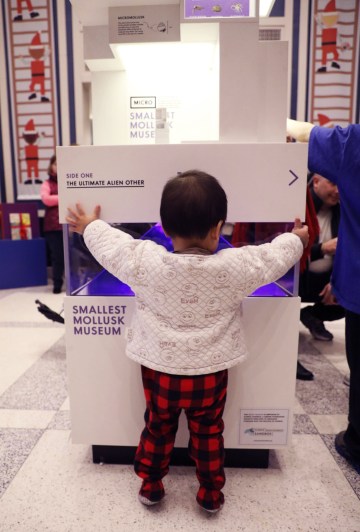
Taking museums into everyday spaces poses some unique design challenges. Being in public spaces means MICRO has to build museums that look and feel ‘museum-y’. (Yes, we talk a lot about what that means!) But at the same time, the museums have to be robust enough to withstand high traffic environments where they have little or no oversight – the Smallest Mollusk Museum on the Rockefeller Center concourse engaged roughly 17,000 people in a month – and beautiful enough to draw people in and become valued parts of the community.
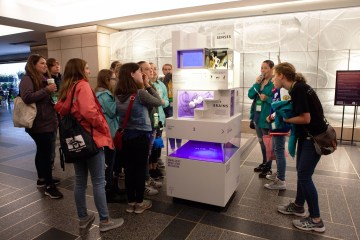
There are challenges for our content team, too. At MICRO, we have to make people stop. We can never assume any prior interest or knowledge, and our content has to be ‘sticky’ enough that our visitors stay and explore. Our audience is not choosing to visit a museum – it’s always new, and always changing.
The first museum series in MICRO’s fleet are science museums. Eleven out of twenty of the most visited museums in the US in 2015 were science museums – by which we mean science, natural history, and air and space museums. Despite their popularity, these museums are also relatively scarce compared to art and culture museums.
MICRO’s natural history museum, the Smallest Mollusk Museum, explores the last 650 million years of life on earth, and is packed with exhibits including miniature movie theaters, the world’s first 3D printed octopus brain, a full-sized holographic aquarium packed with strange beasts and a bucket of slime.
Our museums are ‘narrative’ museums, with a storyline that carries people through: the Smallest Mollusk Museum has a book and an online audio guide voiced by friend-of-the-mollusks Sean Rameswaram of Vox and RadioLab, as well as a set of action packs people can do to help the mollusks.
MICRO’s second museum series, the Perpetual Motion Museum, won the Tribeca Film Institute’s New Media Award and is just about to enter prototyping. A physics and engineering museum, it takes visitors on humanity’s age-old quest to harness and understand energy, a dizzy journey from the Big Bang out to the edge of the observable universe.
The mix of technologies, design innovations, engineering capabilities and storytelling that we have at our fingertips right now is incredible. From the IR cameras inside the Perpetual Motion Museums that show people their own heat escaping through to holographic aquariums in the Smallest Mollusk Museums, there are just so many ways to illustrate concepts and tell stories about science.
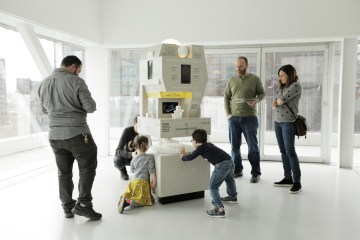
Once we’ve finished developing a museum series, we start replicating the museums so that they can be distributed to venue partners. The museums are installed on a subscription basis for up to a year; this flexible model means that foundations, corporate partners or the venue partners themselves can all support the installation cost.
Our team has grown quickly to a staff of five and counting and a community that includes fabricators, outfitters, engineers, artists, animators, storytellers, distributors and street team members, dozens of science advisors, and of course our designers, Labour, whose museum clients include the Museum of Modern Art, and the Museum of Food and Drink.
Most of the people involved in MICRO are not from the traditional museum world; we’re a very interdisciplinary crew. That said, we’ve had some incredible support from museums. With the support of the Kate Spade Foundation, we participated in NEW INC at the New Museum—the first museum-led cultural incubator. Members of the incubator come together to explore ideas at the intersection of art, technology, and design. We’ve benefited enormously from the expertise and engagement of the NEW INC staff and community.
We’ve also been really fortunate to have support from Science Sandbox, an initiative of the Simons Foundation dedicated to inspiring a deeper interest in science, especially among those who don’t think of themselves as science enthusiasts. The first few years of any new project this ambitious involves lots of exciting challenges, and the foundations who are approaching us now to help us achieve our mission are invaluable partners.
We’re now installing Smallest Mollusk Museums in the NY Health + Hospitals System: there’s already a museum in Lincoln Hospital. It’s been a pretty rapid journey from that first long, scared day in the waiting room to a fleet of museums that is going out there into the world. We’re really excited to start scaling outside New York State, too. It’s going to be an adventure.



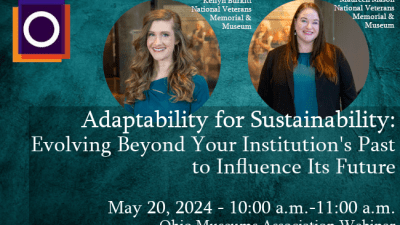
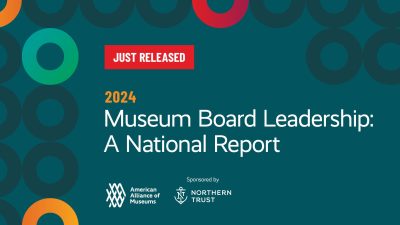
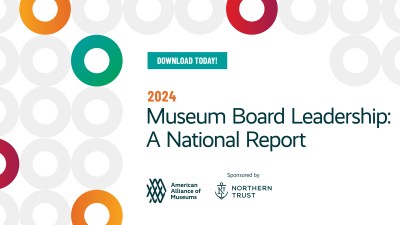

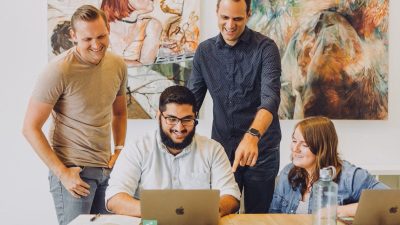
we are developing a model for P->12+ that would use spaces outside of the traditional “school” building, including museums and libraries for example. The micro’s expand this idea when the possibility of adding “credit”. There is now a database that normalizes different credits from different parties which pulls these pieces into a distributed education model.
Perhaps future mini museums could provide engaging information about the public spaces they are in. For example, hospital waiting rooms could have small museums that educate patients about the instruments and procedures the doctors use to help them. And supermarkets could have exhibits about various products they sell.